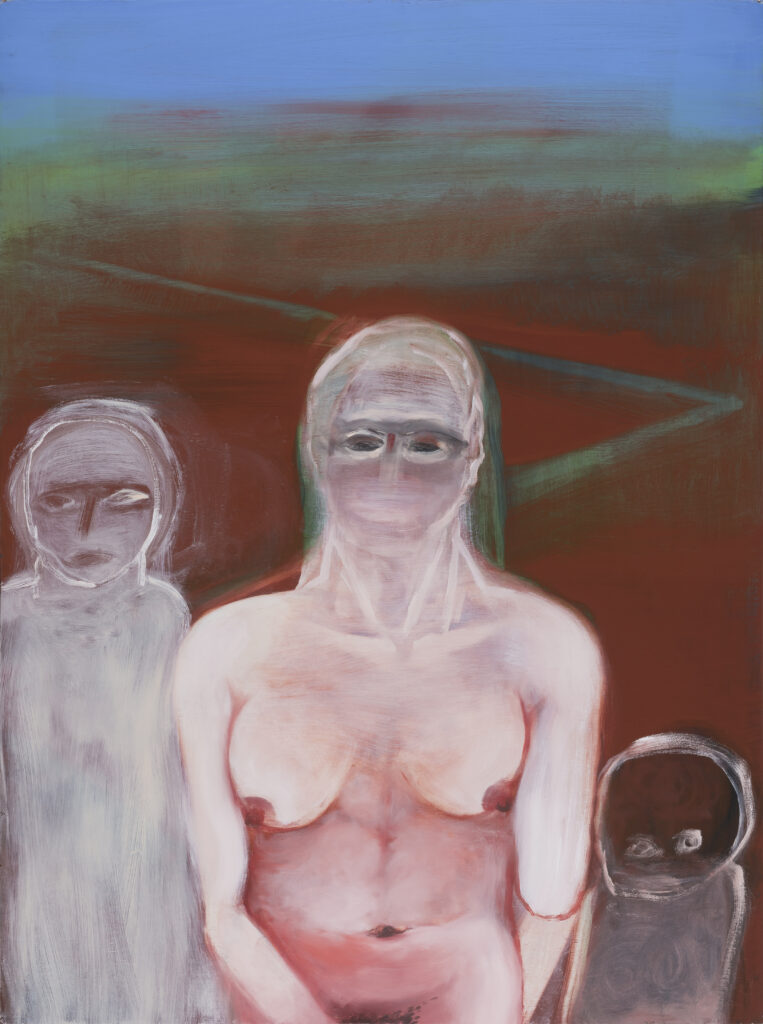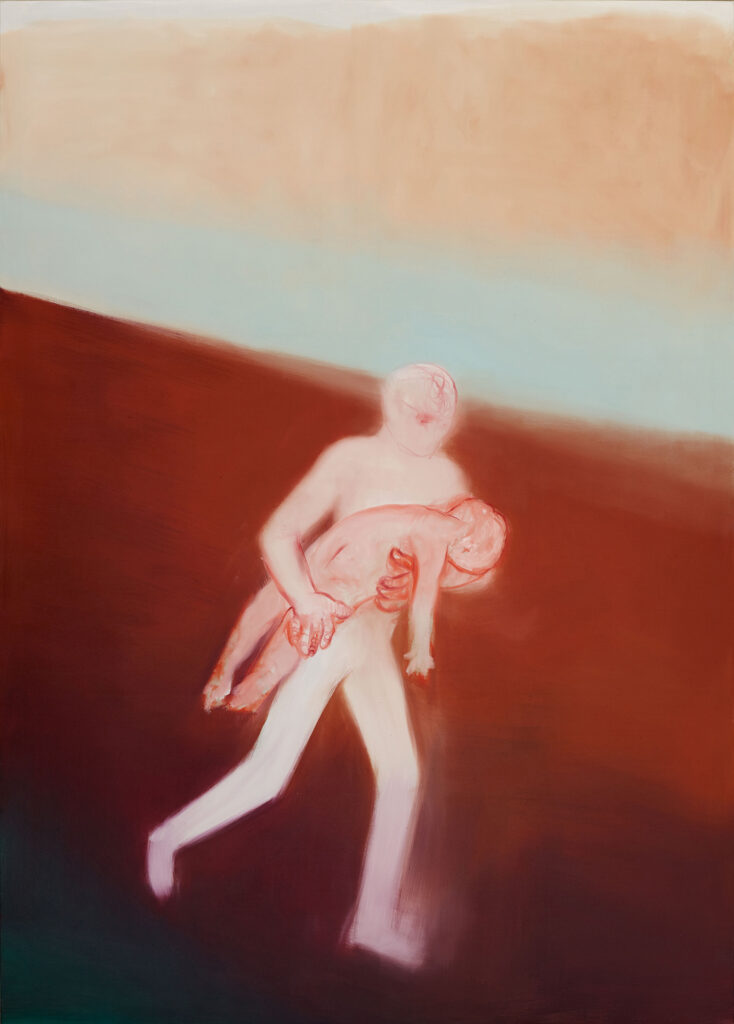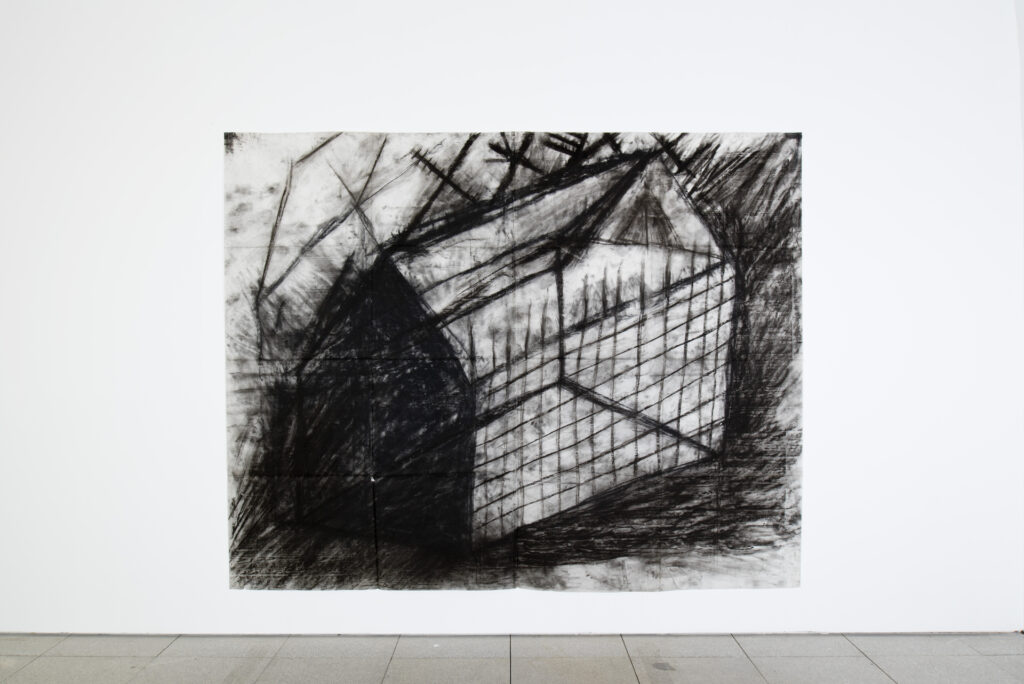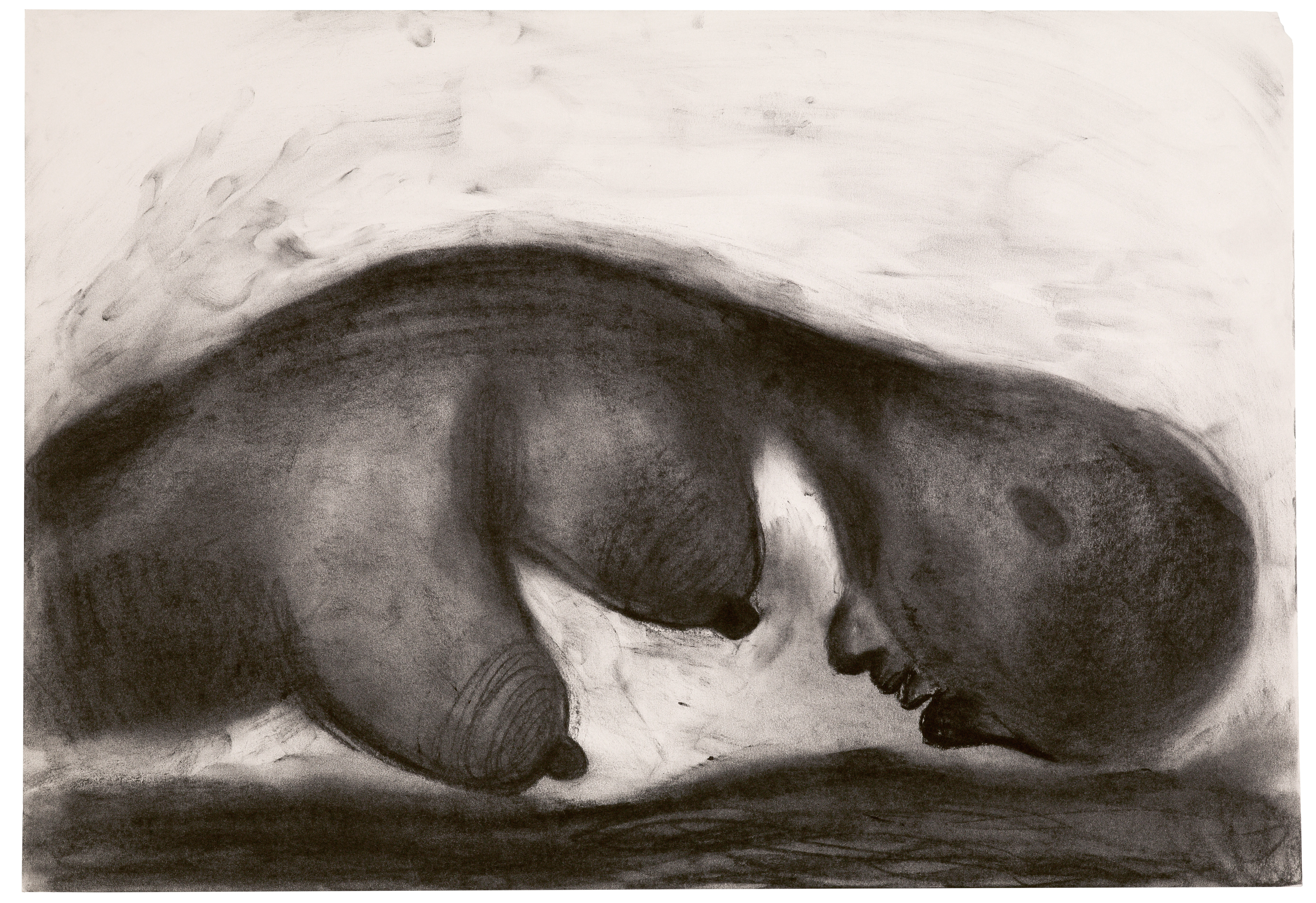Miriam Cahn, Aus der wuste, 2016
Oil on canvas, 145 x 190 cm
Photo: Oliver Roura. Courtesy Private collection.
The compelling and ethereal paintings of Miriam Cahn: seeing the unbearable and revisiting rules
Miriam Cahn (born 1949 in Basel, Switzerland) started her career in the 1970s and initiated painting at the age of 45 in the 1990s in Switzerland. Awarded the 14th Rubens Prize of the City of Siegen (previously obtained by Cy Twombly and Francis Bacon) on June, 26th, 2022, an honour combined with a solo exhibition at the Museum für Gegenwartskunst Siegen, Cahn is one of the most highly regarded artists in Switzerland. Having her work exhibited in numerous international shows and exhibitions, including documenta 7 and 14, Kassel (1982 and 2017), the Venice Biennale (1984), Kunsthalle Basel (1983), Museum of Modern Art, New York (1984), Fundación La Caixa, Madrid (2003), Neue Nationalgalerie, Berlin (2004), Badischer Kunstverein (2014) and Kunsthalle zu Kiel (2016) and many diverse exhibitions across Europe in 2019. When I first discovered her work at the Institute of Contemporary Art in Milan (2022), at the GEZEICHNET exhibition (curated by Alberto Salvadori and Luigi Fassi) I was instantly taken aback by her use of the sometimes garish colours in her oil paintings. Cahn though initiated with black and white charcoal drawings. She states her method of painting and drawing was back then similar to a performance whether it was on the floor until her back could not take it any longer, or on tables, or standing up with the canvas against the wall as she proceeds now, with oil painting. With a more diversified use of colours, Cahn was able to monumentally picture real scenarios.

Miriam Cahn, Mutter kind kind, 2016 + 19.03.2017 Oil on wood, 118 x 88 cm
Photo: François Doury
Courtesy of the artist
Ghostly bodies form compelling and ethereal paintings which in turn express the incredible vulnerability of human beings, the uncertainty of life and death, the fragility of nature and what humanity in this day and age is. Womanhood, fecundity, strength, sex, intimacy, violence, war, refugee crisis, oppression are some of the recurring themes in Cahn’s artworks. It is exactly because Cahn is human that she explores these thematics. As the Swiss artist puts it, “everything is influence” for her practice. Flora, fauna coexist with mutilated bodies and brutal sex forming an absurd quasi monstrous but deeply emotive complexity which is mankind not her “invention as she explains.

Miriam Cahn, Blutungsarbeit, 10.11.1994
Chalk on paper, 54 x 77 cm
Courtesy Private collection, Switzerland
Cahn’ works from the last five decades show her artistic development as well as the evolution of our world and its contradictions, engaging the viewer in seeing the unbearable from genocides, war, displacement, and discrimination ultimately shaping human nature. One may remember Stephan Chorover’s book ‘From Genesis to Genocide: The Meaning of Human Nature and the Power of Behaviour Control’ (1979) in which he explores the blurred lines between psychology and politics, between meaning and power. Chorover stated that theories of human nature linked with society’s efforts to solve serious social issues could be seen as powerful instruments of behaviour control.
Miriam Cahn, Weiss schlägt schwarz, 22.07.2018
Oil on wood, 50 x 54 cm
Photo: Markus Tretter
Courtesy Private collection.
A step into learning from our mistakes to be able to make progress as with Cahn’s paintings, we are invited to reflect on the horrors of the past and the violence suffered. Endless possibilities are left to explore in Cahn’ canvases in the aim of revising rules already established by societal norms trying to conform us.

Miriam Cahn, Rennen, 2013
Oil on canvas, 280 x 200 cm
Photo: Reto Pedrini
Courtesy Galerie Jocelyn Wolff, and Meyer Riegger, Berlin/Karlsruhe
As human, Cahn succeeds in portraying everything that attracts us and repulses us and delivering a contemporary take on the world as it is now. When asked her opinion on the world as it is now, Miriam Cahn states “the classical: NO COMMENT!”

Miriam Cahn, Gitterhaus, 1982
Chalk on paper, 210 x 245 cm
Photo: Oliver Roura
Courtesy Galerie Jocelyn Wolff
Credits
Paintings · Courtesy of Miriam Cahn, Private collections and Galerie Jocelyn Wolff, and Meyer Riegger, Berlin/ Karlsruhe
